M1A1-M1A2 Abrams
The American MBT from the 70's.
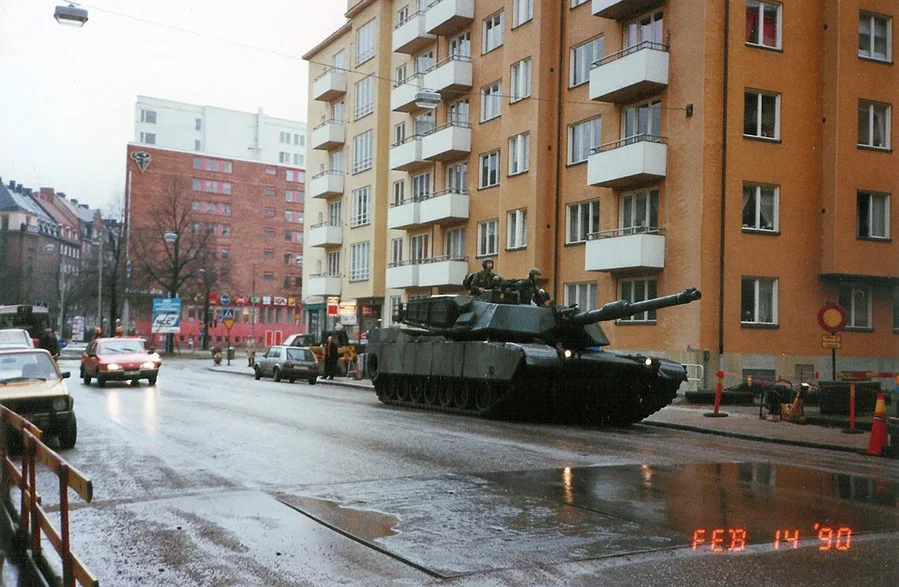
Where they researched tanks from every country, including the Abrams.
Prototype and Production
-
The Abrams project was initiated to replace the aging M60 Patton tanks. The prototype, known as the XM1, was developed in the late 1970s. It featured advanced composite armor and a powerful 105mm gun. The U.S. Army eventually selected the XM1 as its next-generation tank.
-
Production of the M1 Abrams officially started in 1980. The tank featured a 105mm M68 gun but was later upgraded to the more powerful 120mm smoothbore gun, improving its firepower significantly.
Wars and Conflicts
-
The M1 Abrams made its combat debut during the Gulf War (Operation Desert Storm) in 1990-1991. It played a pivotal role in the conflict, demonstrating its advanced armor and firepower. The tank's crew survivability was impressive, as very few Abrams were destroyed during the war.
-
The Abrams tank has also been used in various other conflicts, including the Iraq War in 2003 and the ongoing conflict in Afghanistan. It has proven to be highly effective and has undergone several upgrades to maintain its combat readiness.
The Abrams' combat record has established it as one of the most formidable tanks in the world, with continuous updates and improvements to keep it at the forefront of armored warfare.
Technical specifications
Composite armor and Protection
The Abrams features composite armor in weakspots or larger areas that are prone to being hit. In this picture you can see the location of these spots.
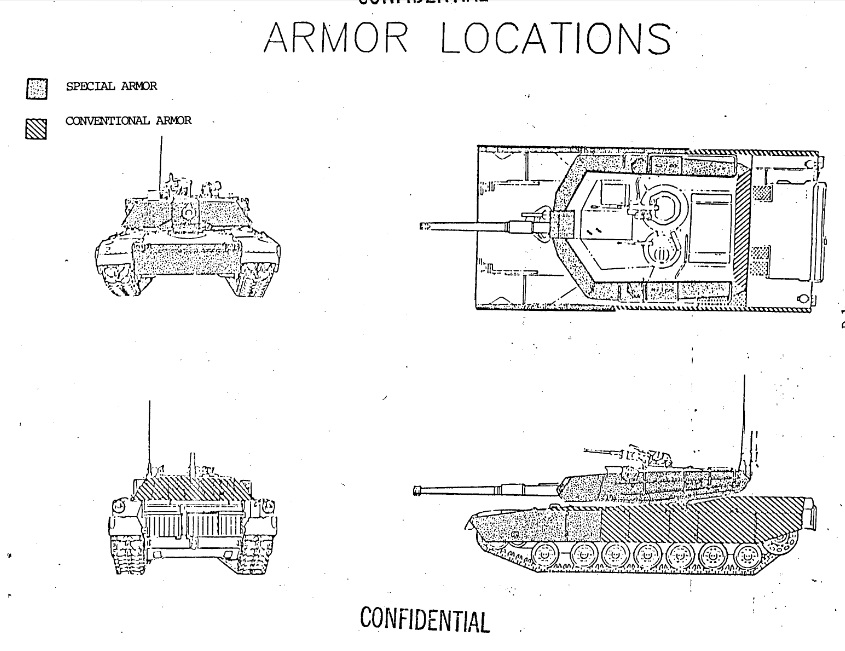
(composite is referred to as special armor)
The material composition of the Abrams composite armor is not publically known. But we can make and educated guess from what we know.
These materials are likely to be the ones used:
-
Steel: The Abrams tank has a steel hull as its outer layer. Steel provides a good level of protection against small arms fire and shell splinters. It also serves as the tank's structural backbone.
-
Composite Layers: Beneath the outer steel layer, composite armor is made up of various materials, including ceramics, such as boron carbide or aluminum oxide, and composite materials like Kevlar or other high-strength fabrics. These materials are designed to dissipate and absorb the kinetic energy of incoming projectiles, reducing the impact on the interior of the tank.
-
Depleted Uranium (DU): In some versions of the M1 Abrams, depleted uranium plates are incorporated into the armor. DU is extremely dense and is used to increase the armor's resistance to armor-piercing rounds. However, it's worth noting that DU is controversial due to its potential long-term health and environmental effects.
Engine
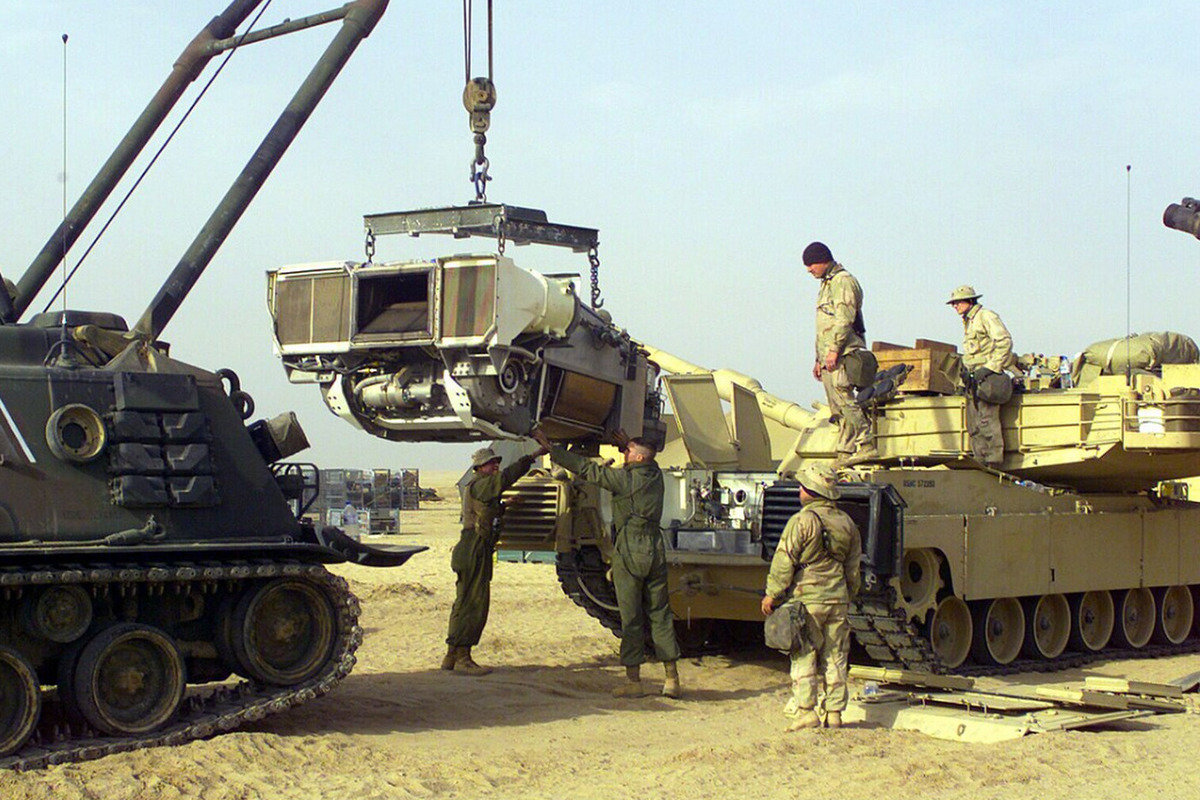
The M1 Abrams tank is powered by a gas turbine engine, specifically the Honeywell AGT1500.
-
Type: Gas Turbine
-
Horsepower: The AGT1500 produces approximately 1,500 horsepower (hence the name "AGT1500"). This high horsepower output provides the M1 Abrams with its exceptional mobility and speed.
-
Fuel: It runs on aviation-grade jet fuel (JP-8) or diesel fuel. This dual-fuel capability provides operational flexibility and logistics advantages.
-
Operation: The gas turbine engine operates on the Brayton cycle, which is typical of gas turbine engines. It uses a compressor, combustion chamber, and turbine to generate power.
-
Speed and Range: The AGT1500 engine gives the M1 Abrams impressive speed and mobility. The tank can reach speeds of up to 45 mph (72 km/h) on roads and maintain good off-road mobility.
-
Maintenance: Gas turbine engines require more maintenance than traditional diesel engines, but the M1 Abrams is designed with a focus on crew safety, and maintenance procedures are well-established.
It's important to note that the gas turbine engine provides the Abrams with significant advantages in terms of power-to-weight ratio and acceleration, making it one of the fastest and most maneuverable main battle tanks in the world. However, it does come with some logistical challenges due to its fuel consumption and maintenance requirements.
Fire control system, armaments and ammunition
-
Main Gun: The primary weapon of the Abrams is a 120mm smoothbore gun. The 120mm gun is more common in modern Abrams variants, providing increased firepower and penetration capability. The main gun can fire multiple different ammunitions including these:
-
Armor-Piercing Fin-Stabilized Discarding Sabot (APFSDS): This is the primary anti-tank round for the Abrams. It features a long, dart-like penetrator designed to defeat heavily armored targets by punching through their armor. APFSDS rounds are known for their high velocity and armor-penetrating capabilities.
-
High Explosive Anti-Tank (HEAT): HEAT rounds are designed to penetrate armored targets using a shaped charge warhead. These rounds are effective against armored vehicles, including tanks, and can penetrate armor by creating a high-velocity, focused jet of molten metal.
-
Multi-Purpose Anti-Tank (MPAT): MPAT rounds are versatile projectiles designed to engage a variety of targets. They can be used against armored vehicles, buildings, and infantry. These rounds can switch between airburst and impact fuzes.
-
Canister Rounds: Canister rounds are essentially a large shotgun shell. They contain numerous small projectiles designed to engage infantry and unarmored targets at close range.
-
Anti-Tank Guided Missiles (ATGMs): Some Abrams tanks are equipped with the ability to fire anti-tank guided missiles from the barrel. The missile is developed by Raytheon and is called the MRM-CE.
-
Training Ammunition: Training rounds are used for practice and training purposes. They simulate the ballistic characteristics of live ammunition but do not have the same destructive capabilities.
-
-
Machine Guns: The Abrams typically has one or more secondary weapons in the form of machine guns, which are used for engaging infantry and lightly armored vehicles. These include:
A .50-caliber M2HB heavy machine gun mounted on the commander's cupola.
One or two 7.62mm M240 machine guns, usually mounted coaxially with the main gun and at the loader's station.
-
Anti-Aircraft Machine Gun: Some Abrams variants are equipped with a roof-mounted M2HB or a remotely operated weapon station armed with a 12.7mm (.50-caliber) machine gun for air defense and anti-personnel purposes.
-
Countermeasures: The Abrams is also equipped with countermeasures to protect against threats like incoming anti-tank guided missiles. These include smoke grenade launchers, infrared jammers, and systems designed to disrupt guidance signals.
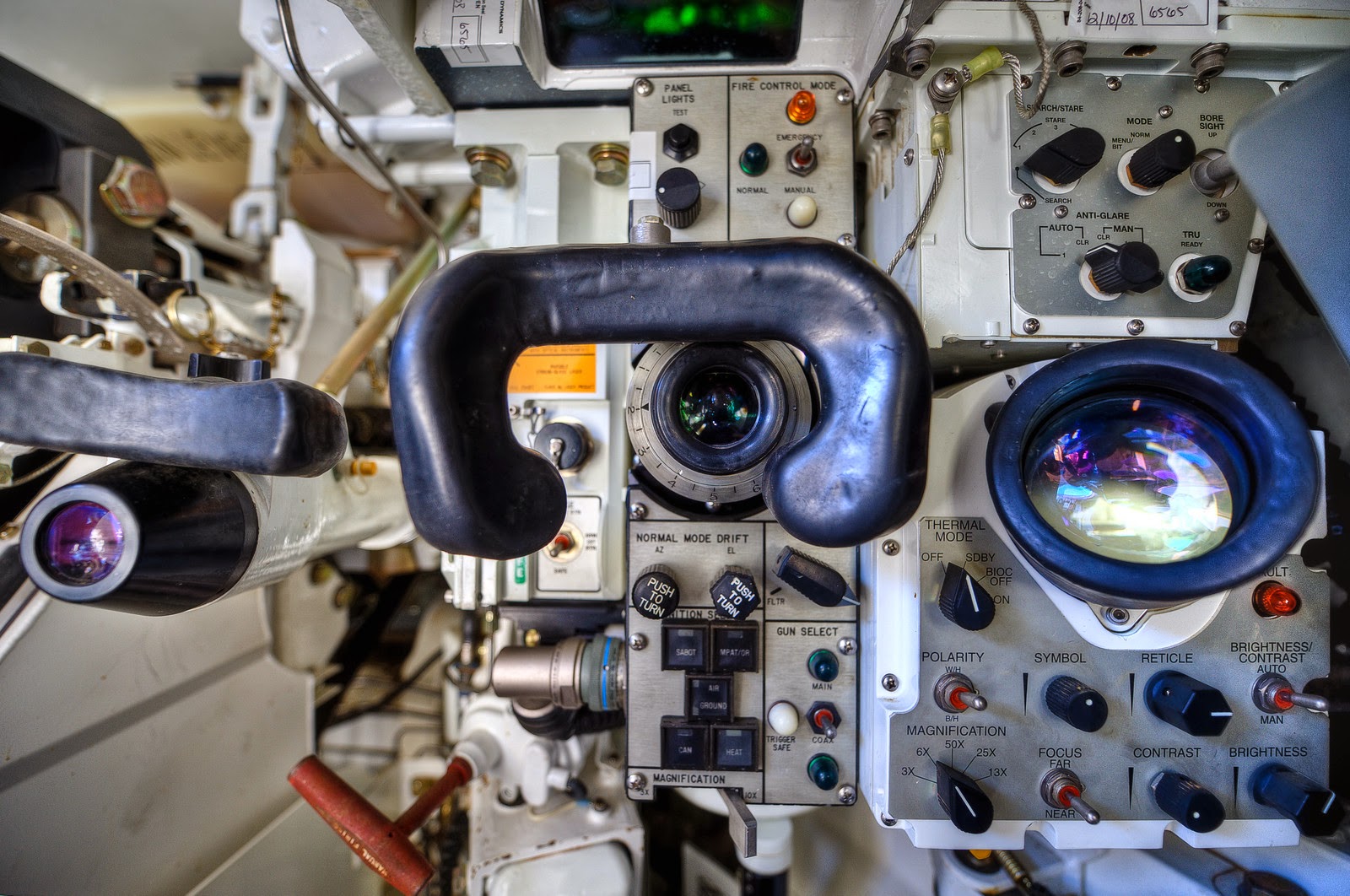
The fire control system on the abrams is state of the art and has access to thermal/night vision. Along with a normal backup sight.
The fire control system (FCS) on the M1 Abrams is a critical component that plays a key role in the tank's accuracy and target engagement capabilities. Here's a brief overview of the fire control system on the Abrams:
-
Fire Control Computer: The heart of the Abrams' FCS is a sophisticated computer that processes various inputs and data to ensure accurate firing solutions. This computer takes into account factors like range to the target, the tank's own movement, environmental conditions, and the specific type of ammunition being used.
-
Laser Range Finder: The M1 Abrams is equipped with a laser rangefinder that accurately measures the distance to a target. This information is crucial for the fire control system to calculate the correct elevation and aiming point for the main gun.
-
Thermal Imaging: The FCS includes thermal imaging and night vision systems that allow the tank crew to acquire and engage targets in low-light or adverse weather conditions. This enhances the tank's ability to operate effectively at night.
-
Ballistic Computer: The fire control computer incorporates a ballistic computer that calculates the necessary adjustments for the gun's elevation, taking into account factors like range, ammunition type, and environmental conditions. This ensures that the tank's main gun is accurately aimed to hit the target.
-
Stabilization: The Abrams is known for its advanced stabilization system, which keeps the main gun and other secondary weapons steady even when the tank is on the move. This is crucial for engaging targets while the tank is in motion, increasing the tank's combat effectiveness.
-
FCS Integration: The Abrams' fire control system is tightly integrated with other systems on the tank, such as the turret drive, laser designator, and thermal sights, to provide a cohesive and effective targeting and engagement solution.
-
Automatic Target Tracking: Some versions of the Abrams are equipped with automatic target tracking, which allows the tank's FCS to lock onto and follow a target, making it easier to maintain accurate fire on the enemy.
TUSK Variants
The Tank Urban Survival Kit (TUSK) is a set of upgrades and modifications designed to enhance the M1 Abrams tank's effectiveness in urban combat and other close-quarters environments. The TUSK program includes several variants, including TUSK, TUSK I, and TUSK II. Here's an overview of each variant:
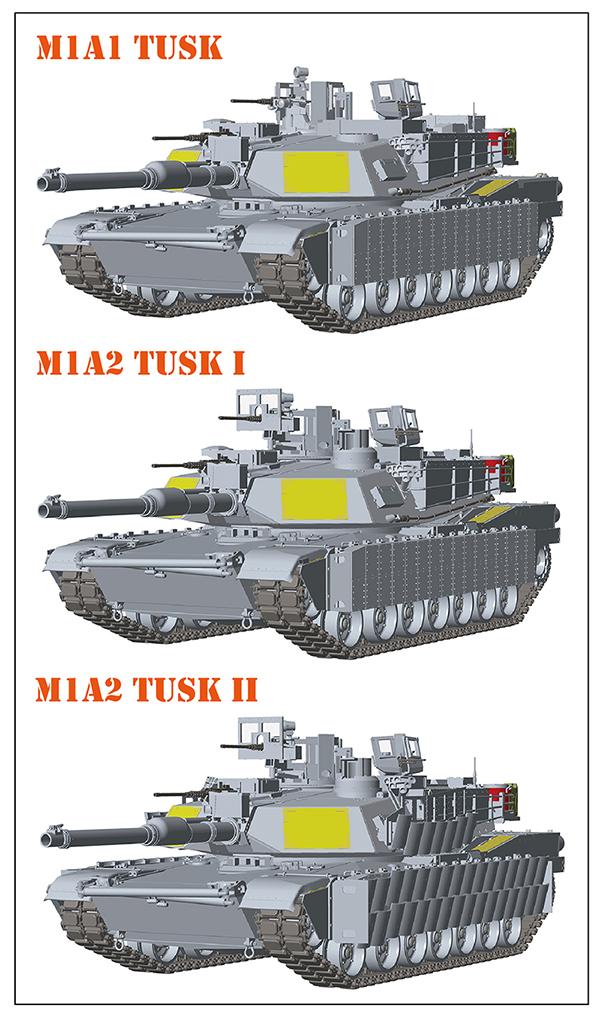
shown and their differences.
-
TUSK (Tank Urban Survival Kit):
-
The initial TUSK package aimed to address the challenges of urban warfare. It included various improvements to the Abrams tank to make it more effective in urban and built-up areas.
-
Some of the features of the basic TUSK kit included additional armor, especially around vulnerable areas like the crew compartment and turret, to improve protection against RPGs and anti-tank weapons used in close-quarters combat.
-
TUSK also added secondary weapons for engaging infantry and fortified positions, including a roof-mounted M2HB .50-caliber machine gun for the tank commander and a coaxial M240 machine gun.
-
-
TUSK I:
-
TUSK I represents an evolution of the basic TUSK package, introducing further enhancements to the Abrams tank for urban warfare.
-
This variant included improvements in the form of slat armor, which is a type of cage armor designed to defeat rocket-propelled grenades (RPGs) and other anti-tank munitions.
-
TUSK I also included additional protection for the tank's tracks, further enhancing its survivability in urban combat scenarios.
-
-
TUSK II:
-
TUSK II is an advanced version of the TUSK package, with a focus on improving the Abrams' situational awareness and crew protection in urban environments.
-
It introduced a more robust and improved commander's weapon station, often equipped with thermal and day optics, along with the M2HB machine gun.
-
TUSK II also enhanced the tank's communication systems and added more advanced armor, such as side skirts and improved mine protection.
-
These TUSK variants were developed to address the specific challenges posed by urban combat, where tanks can be vulnerable to ambushes, improvised explosive devices (IEDs), and RPG attacks. The upgrades provided by TUSK packages enhance the Abrams tank's survivability and effectiveness in these environments, making it a more adaptable and formidable asset in a variety of combat scenarios. The exact configuration of TUSK packages may vary depending on the version and specific needs of the tank.
Finishing notes
All this was written and researched by ainawastaken in about a day. (excluding some information i already had)
You can find some more pictures and documents of the Abrams in my extensive list of military equipment. You can find the Abrams folder here and the entire folder here